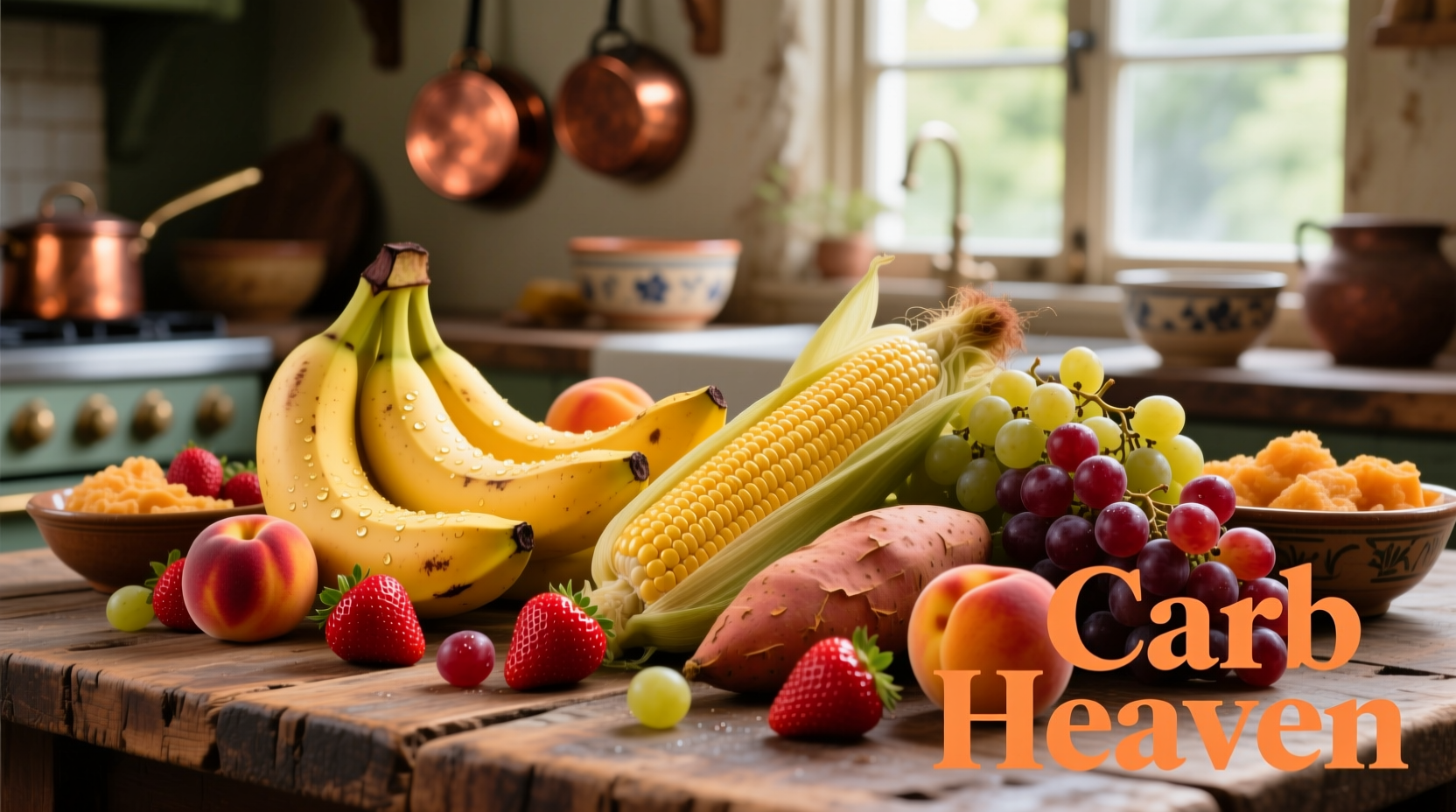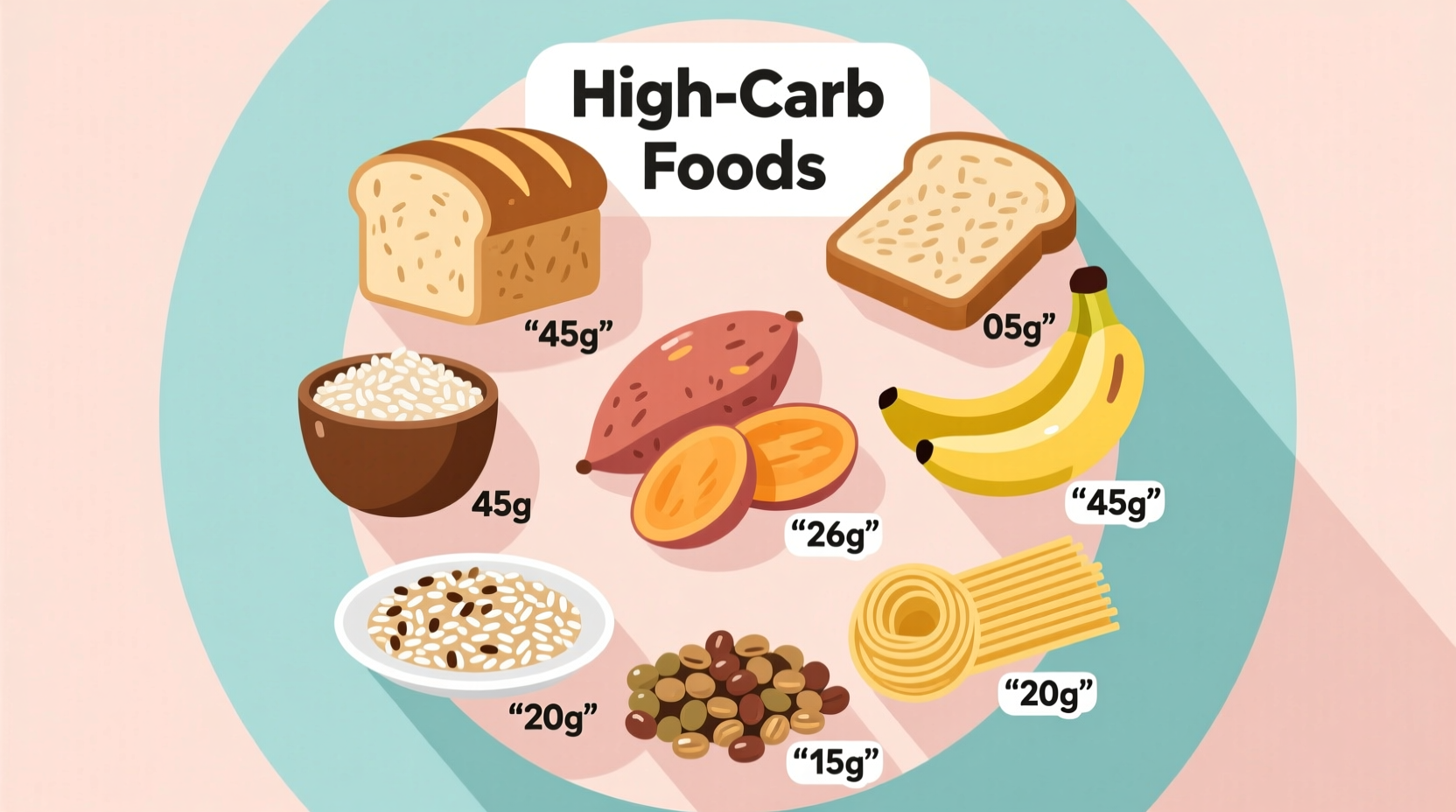The top high-carbohydrate foods include grains like rice and oats, starchy vegetables such as potatoes and corn, fruits like bananas and mangoes, legumes including beans and lentils, and dairy products such as milk and yogurt. A single cup of cooked white rice contains approximately 45 grams of carbohydrates, while a medium banana provides about 27 grams. Understanding which foods are high in carbohydrates helps with dietary planning for energy management, athletic performance, and health conditions like diabetes.
Knowing exactly what foods are high in carbohydrates gives you the power to make informed decisions about your nutrition, whether you're an athlete optimizing performance, managing blood sugar levels, or simply planning balanced meals. This comprehensive guide cuts through the confusion with scientifically verified information about carbohydrate-rich foods, their nutritional profiles, and practical ways to incorporate them into your diet based on your specific needs.
Why Carbohydrate Knowledge Matters for Your Daily Nutrition
Carbohydrates serve as your body's primary energy source, fueling everything from intense workouts to basic brain function. The quality and timing of your carb intake significantly impact your energy levels, athletic performance, and long-term health. Research from the Dietary Guidelines for Americans indicates that carbohydrates should comprise 45-65% of your daily caloric intake for optimal health, though individual needs vary based on activity level and health conditions.
High-Carb Food Categories You Should Know
Understanding the different categories of high-carbohydrate foods helps you make strategic choices based on your nutritional goals. Let's explore each category with precise nutritional data from the USDA FoodData Central database.
Grains and Cereals: The Foundation of Carb Intake
Grains form the backbone of carbohydrate consumption worldwide. Whole grains offer additional fiber and nutrients compared to refined versions. A single cup of cooked grains typically contains 40-50 grams of carbohydrates.
| Food | Carbohydrates (per 1 cup cooked) | Fiber Content | Glycemic Index |
|---|---|---|---|
| White rice | 45g | 0.6g | 73 |
| Brown rice | 45g | 3.5g | 50 |
| Oats | 27g | 4g | 55 |
| Quinoa | 39g | 5g | 53 |
As noted by the Harvard T.H. Chan School of Public Health, whole grains like brown rice and quinoa provide more sustained energy due to their higher fiber content and lower glycemic index compared to refined grains.
Starchy Vegetables: Nature's Energy Packages
Often overlooked as carb sources, starchy vegetables deliver carbohydrates along with valuable vitamins and minerals. A medium potato contains more carbohydrates than many people realize—approximately 37 grams.
According to research published in the American Journal of Clinical Nutrition, starchy vegetables like sweet potatoes provide complex carbohydrates that release energy gradually, making them excellent pre-workout foods. The fiber content in these vegetables also supports digestive health and helps regulate blood sugar levels.
Fruits: Nature's Sweet Carbohydrate Sources
Fruits provide natural sugars along with essential vitamins, minerals, and antioxidants. While all fruits contain carbohydrates, some are significantly higher than others:
- Bananas (medium): 27g carbs
- Mango (1 cup): 28g carbs
- Grapes (1 cup): 27g carbs
- Apples (medium): 25g carbs
Dietitians at the Academy of Nutrition and Dietetics recommend pairing higher-carb fruits with protein or healthy fats to slow sugar absorption. For example, eating an apple with almond butter creates a more balanced snack that prevents blood sugar spikes.
Legumes: The Protein-Carb Powerhouses
Beans, lentils, and peas offer an impressive combination of carbohydrates and plant-based protein. One cup of cooked lentils contains about 40 grams of carbohydrates along with 18 grams of protein.
Studies from the National Institutes of Health show that the resistant starch in legumes improves insulin sensitivity and supports gut health. This makes legumes particularly valuable for people managing blood sugar levels while still needing adequate carbohydrate intake.
Contextual Considerations for High-Carb Foods
Understanding which foods contain the most carbs is just the beginning—knowing when and how to incorporate them matters equally. Different dietary approaches view high-carbohydrate foods through various lenses:
| Dietary Approach | View on High-Carb Foods | Recommended Timing |
|---|---|---|
| Athletic Performance | Essential for energy and recovery | Pre- and post-workout |
| Diabetes Management | Need careful portion control | Evenly distributed throughout day |
| Weight Management | Focus on complex carbs with fiber | Earlier in the day |
This contextual understanding helps explain why the same high-carbohydrate food might be recommended for one person while limited for another. The American College of Sports Medicine specifically recommends 3-5 grams of carbohydrates per kilogram of body weight daily for active individuals, increasing to 6-10 grams for endurance athletes.
Practical Applications for Your Lifestyle
Now that you know natural sources of carbohydrates, let's explore how to apply this knowledge effectively:
For Athletes and Active Individuals
Time your carbohydrate intake strategically around workouts. Consume complex carbohydrates like oats or whole grain bread 2-3 hours before exercise, then follow with a combination of carbs and protein within 45 minutes post-workout. A study in the Journal of the International Society of Sports Nutrition found that this approach improves performance and recovery.
For Blood Sugar Management
Pair high-carbohydrate foods with protein, healthy fats, or fiber to slow glucose absorption. For example, instead of eating fruit alone, combine it with Greek yogurt or nuts. The American Diabetes Association recommends using the plate method—filling half your plate with non-starchy vegetables, one-quarter with lean protein, and one-quarter with carbohydrate-containing foods.
For Everyday Energy Balance
Distribute your carbohydrate intake throughout the day rather than consuming large amounts at one meal. This approach maintains steady energy levels and prevents the crashes associated with sugar spikes. Opt for whole food sources over processed options whenever possible.

Quality vs. Quantity: Making Smart Carb Choices
Not all high-carbohydrate foods deliver equal nutritional value. Focus on complex carbohydrates with fiber, vitamins, and minerals rather than simple sugars. The difference between choosing white bread (high glycemic index, low fiber) versus whole grain bread (lower glycemic index, high fiber) significantly impacts how your body processes those carbohydrates.
Research from the Centers for Disease Control and Prevention shows that Americans typically consume too many refined carbohydrates and added sugars while falling short on whole grains and fiber. Shifting toward higher-quality carbohydrate sources improves overall diet quality without necessarily reducing total carb intake.
When to Limit High-Carb Foods
Certain health conditions require careful monitoring of carbohydrate intake:
- Diabetes: Work with your healthcare provider to determine appropriate carb limits
- Metabolic syndrome: May benefit from moderate carb reduction
- Specific athletic goals: Some training phases may call for carb cycling
The key isn't eliminating carbohydrates but selecting the right types and amounts for your individual needs. As the Mayo Clinic emphasizes, a sustainable approach focuses on quality rather than extreme restriction.











 浙公网安备
33010002000092号
浙公网安备
33010002000092号 浙B2-20120091-4
浙B2-20120091-4